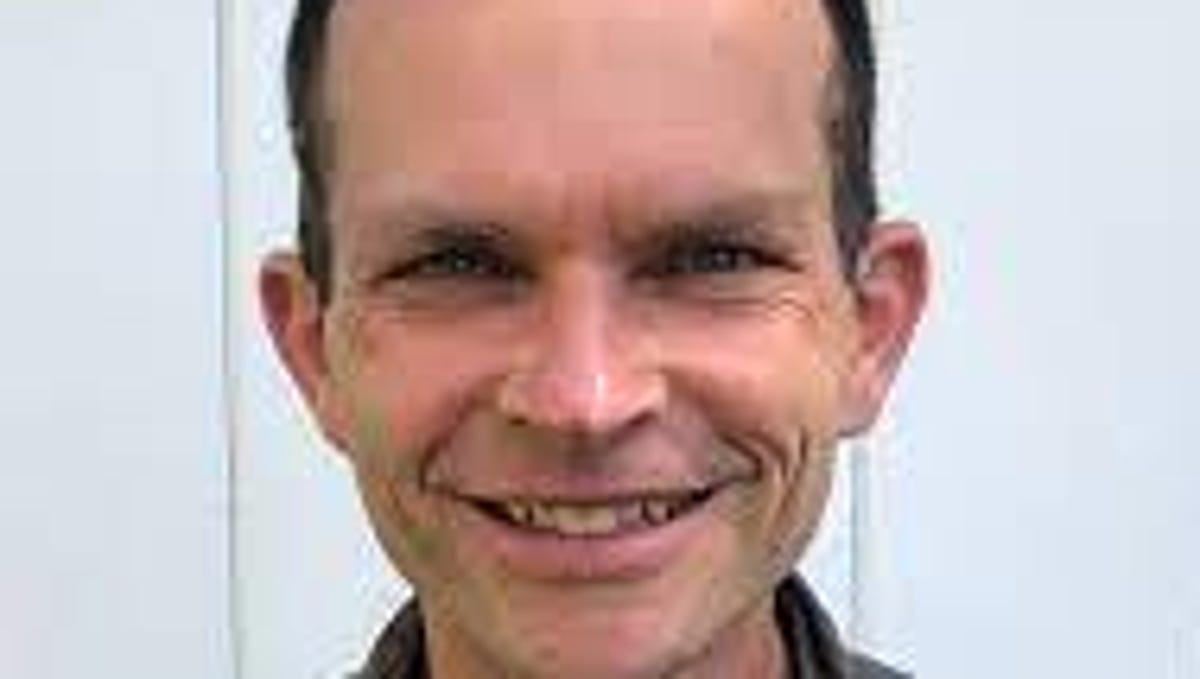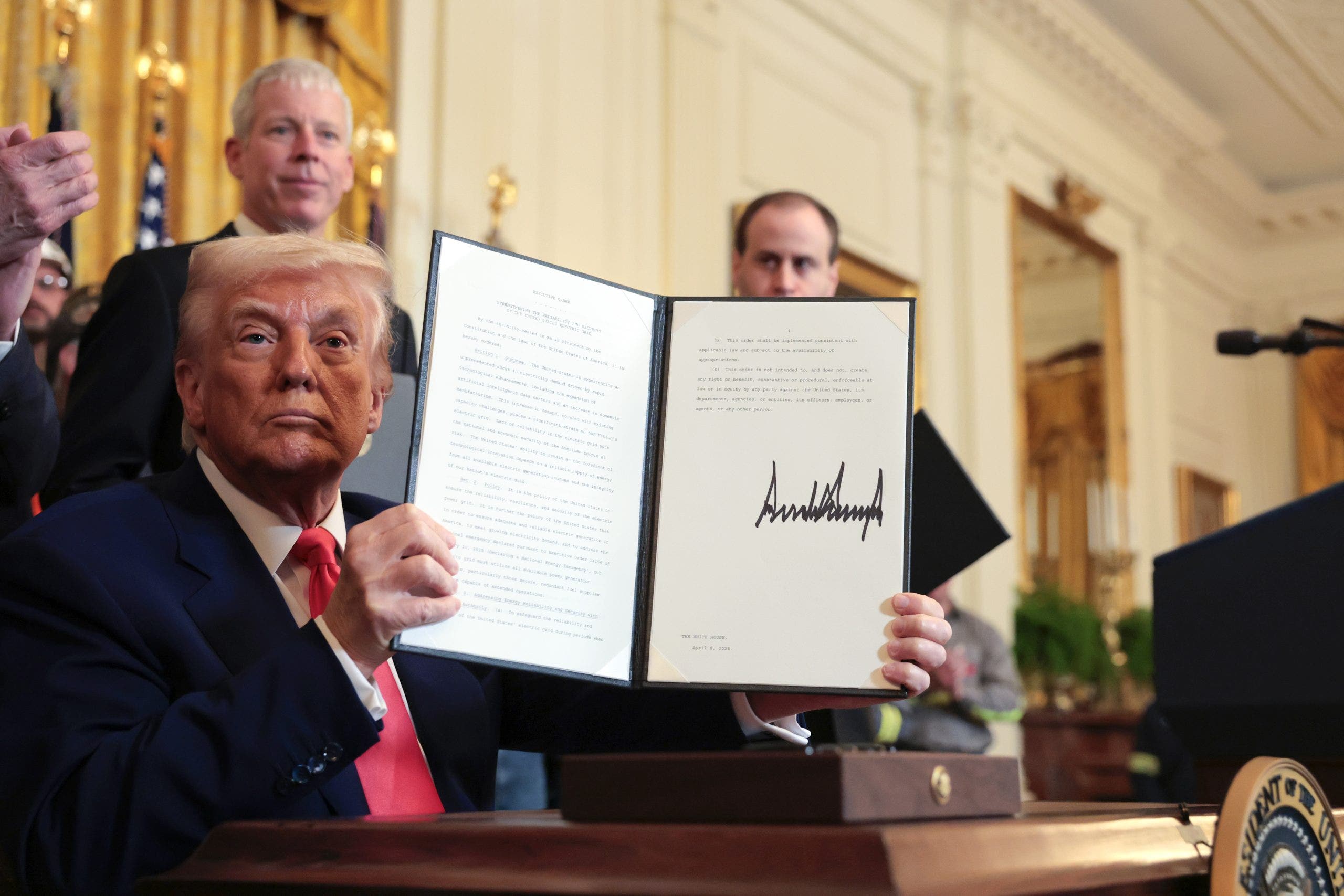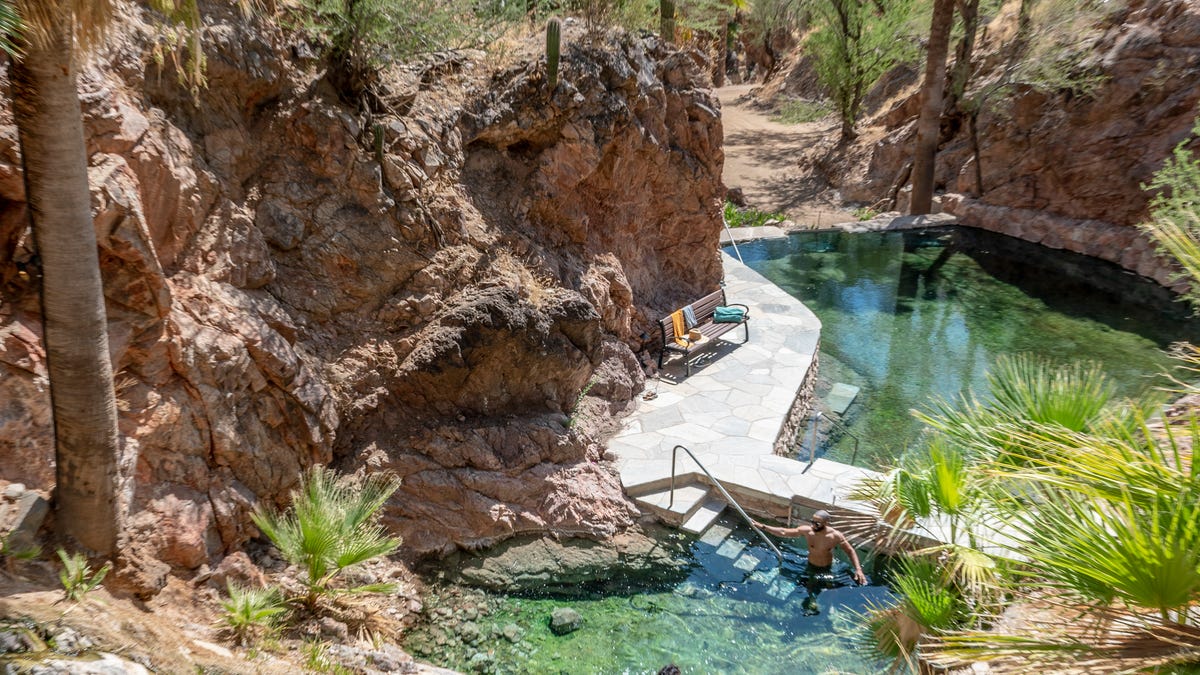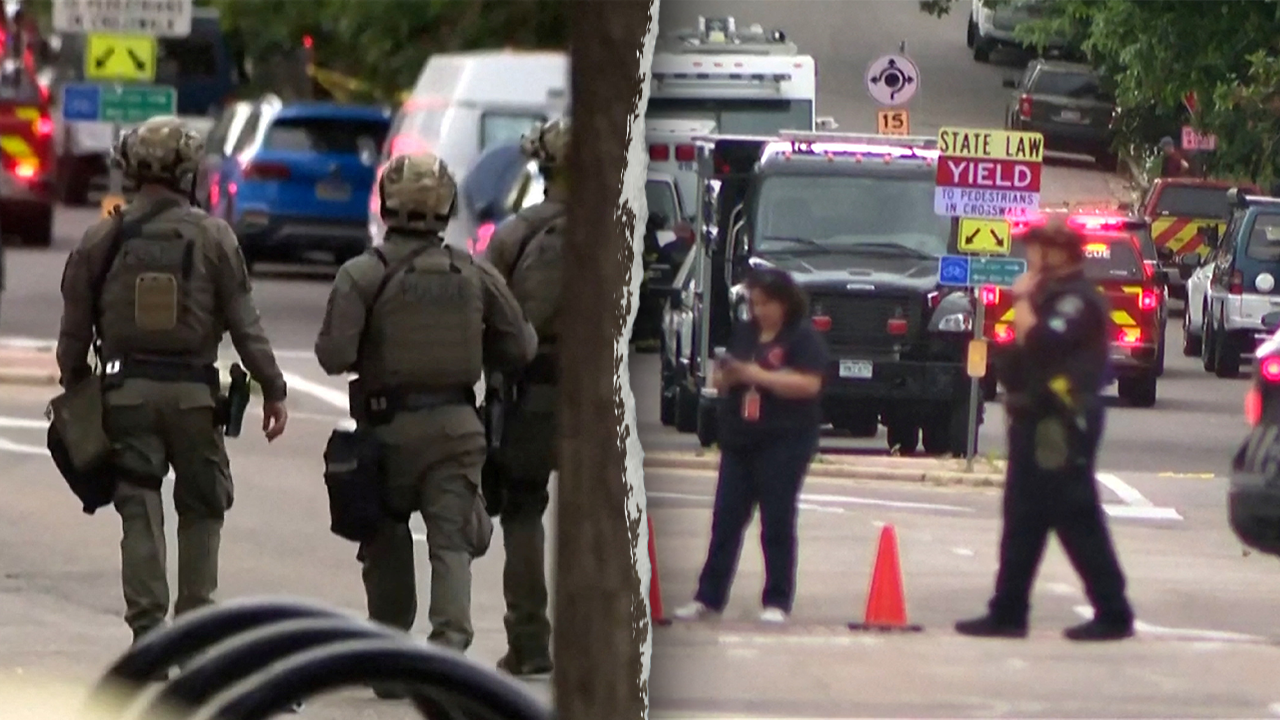Austin, TX
Amid extreme temperatures, Texas state parks can be a respite — or a heated hindrance all their own

Sign up for The Brief, The Texas Tribune’s daily newsletter that keeps readers up to speed on the most essential Texas news.
On a recent sweltering afternoon, Doug Cochran stood outside the visitor center of Enchanted Rock State Natural Area and pointed an infrared thermometer gun at the black tarmac in the parking lot. The display read 141 degrees. He swung it over to a nearby patch of dry soil. Even hotter: 163 degrees.
“Heat Warning! Feels Like 110°,” read a sign at the entrance to the park, famous for its exposed rock domes that have essentially spent the summer baking in the sun. “Know your limits!”
As superintendent of the park just north of Fredericksburg in Central Texas, Cochran likes to see well-prepared visitors come to Enchanted Rock in the summer. But he’s also happy when Texans opt for other outdoor experiences, often with water access, instead of the minimally shaded grasslands and bare granite.
“We can’t tell them, ‘You can’t go,’ but we want them to make wise decisions,” Cochran said about warning park visitors of the heat. “We’ve had 39 people get injured this year and we don’t want you to become number 40.”
Texas has already seen several heat-related deaths in state and national parks this summer, though it’s not alone. A 17-year-old hiker died after he was rescued from the Lighthouse Trail at Palo Duro Canyon State Park on June 21. Two days later, a 14-year-old died while hiking the Marufo Vega Trail in Big Bend National Park in 119-degree heat. His stepfather died while trying to get help.
This year’s brutal summer — even by Texas standards — poses serious risks including heat exhaustion, heat stroke and, in the most serious cases, death. But the blistering heat, as sweat-inducing and uncomfortable as it is, hasn’t deterred nature lovers from enjoying the collective diversity of Texas’ 89 state parks, historic sites and natural areas this year.
There was no dramatic decrease in the number of visitors to state parks in May and June, despite record-breaking temperatures in some parts of the state. In June, state parks collectively logged 1 million visitors — the third highest number for that month since 2016 — despite recording an abnormally intense period of extended high temperatures that month.
While some parks become less hospitable in the hot, summer months, others have attracted more visitors because of aquatic amenities.
“It might drop at Stephen F. Austin Park where there’s not a water feature, but at Galveston Island their visitation is increasing to counter that,” said Justin Rhodes, a deputy director in the Texas Parks and Wildlife Department.
Rhodes, like Cochran, is happy Texans are opting for parks with places to cool down, given the risks extreme heat can pose to the public at parks.
“We’re seeing more and more new users come to Texas state parks who may not have experience in the outdoors and they’re dipping their toes in the water, if you will, and just may not realize those dangers exist,” Rhodes said.
***
Just southeast of Austin, McKinney Falls State Park typically offers the antithesis of Enchanted Rock for park visitors. Cool water pours from limestone cliffs into a wide pool, which brazen youth jump into when water levels are high.
But a persistent drought paired with the heat wave has left the swimming holes of McKinney Falls with less — and warmer — water.
When Onion Creek runs through McKinney Falls at lower levels, the pools warm under the relentless sun. Yet for some Central Texans, the allure of relief from the triple-digit temperatures is enough to draw them to McKinney Falls.
“I like to be outside,” said Hannah Foote, an Austin resident who normally goes to that city’s beloved Barton Springs Pool to cool off but also wanted to hike around the park on Friday. “I’m trying to hit all the water spots near the city,”
/https://static.texastribune.org/media/files/d97b5eb37c97a842ea6a8adc3172d27a/0729%20McKinney%20Falls%20SP%20JT%20TT%2006.JPG)
/https://static.texastribune.org/media/files/a25e1514586508b2fa7058f378d3bf0f/0729%20McKinney%20Falls%20SP%20JT%20TT%2008.JPG)
/https://static.texastribune.org/media/files/472c7b53527df8a6abf6a33f5407526c/0729%20McKinney%20Falls%20SP%20JT%20TT%2012.JPG)
By Saturday, the park was drawing more people. Burning rays of triple-digit sunlight reflected off empty cars’ foldable silver sun shades. Sounds of splashing water resounded in the near distance. A group of 11 unpacked a truck with the essentials for the day: a blue inflatable kayak, a clear inner tube with pink flamingos and a cooler full of drinks on ice.
The Mendoza, Zapato and Alonzo families spent the morning driving up from Mission, and they wasted no time before jumping off the park’s short cliffs into its emerald green creek, joining a growing crowd of about 50 people cooling off in the natural waters.
Streaks of water meandered down 14-year-old Pablo Zapato’s skin as he climbed through a hole in the rock for several rounds of cannonballs. Alberto Mendoza IV, 18, Zapato’s cousin, joined in as his sister, Pamela, 17, sat atop the limestone, watching the others wade down below — trading the summer heat for a day of cool water.
At one point, two state park police officers walked around, checking to make sure the depressed water levels were still high enough for people to safely swim and jump into the water.
***
Back at Enchanted Rock last week, Ludwig Koops admired the bulbous, granite slabs known as exfoliation domes as he stood under a rotunda providing some of the only shade in the park. In the distance, a single group of hikers descended what appeared to be a massive ant hill under a magnified sun.
Koops, who was visiting family in San Antonio from the Netherlands, was on a tour of Texas when he made a detour to see Enchanted Rock. But the view from the shade was enough for Koops and his family.
He said the extreme temperature swings so indicative of Texas summers — from the scorching heat outside, to the artificial cold of air conditioning — was both unpleasant and unfamiliar compared to the Netherlands’ less-infernal climate.
But for other Enchanted Rock visitors, who are more acquainted with the inescapable heat, this summer is just another chance to get outside.
“If you grew up doing something and you always do it, then it’s not a big deal for you,” said Cameo Davis of Cypress, who was hiking with her daughter and two grandchildren last Wednesday. “I think it’s a mindset.”
Davis, unlike Koops, grew up in Texas and spent her childhood camping at nearby Inks Lake State Park. Davis said she goes jogging in this weather.
“One hundred years ago, no one had AC and everybody did just fine, right?” she said while descending from the summit of Enchanted Rock in 105-degree heat, equipped with four water bottles and an umbrella.
/https://static.texastribune.org/media/files/246cc92994dd5fcea827617050b475fd/0726%20Enchanted%20Rock%20EG%20TT%2033.jpg)
/https://static.texastribune.org/media/files/e6328afbc39ced6cb5dac015602489a0/0726%20Enchanted%20Rock%20EG%20TT%2026.jpg)
/https://static.texastribune.org/media/files/0783adfde34fc42023bd6429556f1021/0726%20Enchanted%20Rock%20EG%20TT%2025.jpg)
When prospective visitors ask Cochran what it’s like to hike in Enchanted Rock in the summer, he says similar to opening an oven door when baking a pizza.
“We don’t have that wonderful smell but it’s that hot,” Cochran said.
Kevin Good, the president of the nonprofit Texans for State Parks, said the summer isn’t too much of a deterrent — especially for those traveling to state parks in air-conditioned recreational vehicles.
“I think folks just sort of get to where they accept it as part of the reality,” Good told The Texas Tribune recently.
One way Texans for State Parks supports natural areas and historic sites is through “friends groups,” Good said. These collectives draw together volunteers who are passionate about individual parks and offer their help to conserve and protect these areas. That can include teaching park visitors how to safely enjoy state parks in the summer heat.
In some parks, those friend groups station themselves at trailheads to offer additional water and warn hikers how much hotter the heat index is — the external temperature that the human body feels considering humidity — than the measurable temperature, Good said.
To prevent heat exhaustion and heat stroke, Cochran recommends carrying at least one quart of water, per person, per hour of hiking; taking frequent breaks in the shade; and hiking with a buddy. In the event someone needs to call emergency assistance, either the park headquarters or 911, Cochran emphasized the importance of staying in one place so rescuers can quickly locate the individual in distress.
But the best advice, Cochran said, was to come visit Enchanted Rock in the spring or fall instead. Days that don’t manage to exceed 100 degrees are a blessing in the summer, he said.
“Double digits? We’ve got a cold front,” Cochran joked as the white-hot sun beat down on his exposed neck.
Disclosure: Texas Parks And Wildlife Department has been a financial supporter of The Texas Tribune, a nonprofit, nonpartisan news organization that is funded in part by donations from members, foundations and corporate sponsors. Financial supporters play no role in the Tribune’s journalism. Find a complete list of them here.
More than 200 speakers are now confirmed for the 2023 Texas Tribune Festival in downtown Austin from Sept. 21-23. Each year, the Festival engages, challenges and surprises attendees with unexpected talent mashups, must-see interviews and more, curated by the award-winning journalists at The Texas Tribune. See the lineup and get tickets today.

Austin, TX
First Impression Ironworks Expands Reach into Austin, Texas with Luxury Line of Iron Entry Doors & Iron Security Doors

For 30 years, First Impression Ironworks has set the standard for superior, 100% USA-made steel products. Since 1995, the company has installed over 300,000 Iron Doors and Gates nationwide, earning a reputation for durability, beauty, and outstanding customer care for both homeowners and builders alike.
Award-Winning Service and Unmatched Reputation
With a dedicated team of over 200 skilled employees and more than 100,000 square feet of showroom and production space—including its newest Iron Doors showroom in Austin, Texas—First Impression Ironworks is recognized for its outstanding service and ethical business practices. The company has maintained an A+ Rating with the Better Business Bureau since 2002, is the recipient of the 2024 BBB Torch Award for Ethics, has received numerous Best of the Desert Community Choice Awards and has achieved the Best of Houzz Customer Service Award.
Premium Iron Products For The Home Now Available in Austin
Austin homeowners will now have access to First Impression Ironworks’ signature Iron Entry Doors and Iron Security Screen Doors Collections.
“First class quality, first class value, and first-class care is our commitment to every customer, every custom iron product, and every home,” explains Mark Baraghimian, Chief Executive Officer. “We are thrilled to extend this commitment to Homeowners in Austin as we celebrate 30 years of service.”
About First Impression Ironworks
Founded in 1995, First Impression Ironworks is the nation’s leading designer, manufacturer, and installer of custom iron security doors, iron entry doors, iron and wood gates, and more. The company averages more than 12,000 in-home design consultations annually and is committed to providing exceptional value and craftsmanship to every customer.
For more information, visit www.firstimpressionsecuritydoors.com/texas
Media Contact
Larry Richard, First Impression Ironworks, 1 310-560-6004, [email protected], https://www.firstimpressionsecuritydoors.com/texas/
SOURCE First Impression Ironworks
Austin, TX
Club Champion: Fitting studio opens at Golfinity Austin

Willowbrook, IL – Custom golf club fitter Club Champion announces the opening of its new fitting studio, located inside of Golfinity, 12332 N FM 620, Building B, Austin, TX. The new studio is open and accepting fitting appointments. This new studio concept represents Club Champion’s 12th location in the state of Texas.
The new studio features one indoor hitting bay with a Trackman launch monitor for analyzing performance, a SAM PuttLab system to find the perfect putter, and a build shop for repairing and assembling golf clubs by hand. The studio will feature brands like TaylorMade, PING, Titleist, Cobra, Fujikura, Golf Pride, and many more.
Golfinity has redefined the indoor golf experience. As one of the largest indoor golf performance clubs in the country, Golfinity offers state of the art technology, professional instruction, leagues, events, youth programming, and a vibrant community atmosphere. The integration with Club Champion allows Golfinity to expand its performance offering and deliver an even more holistic golf improvement journey. This single-bay concept within an existing golf business is a newer concept for Club Champion, and Golfinity Austin will be a test market.
Golfinity has redefined the indoor golf experience. As one of the largest indoor golf performance clubs in the country, Golfinity offers state of the art technology, professional instruction, leagues, events, youth programming, and a vibrant community atmosphere. The integration with Club Champion allows Golfinity to expand its performance offering and deliver an even more holistic golf improvement journey. This single-bay concept within an existing golf business is a newer concept for Club Champion, and Golfinity Austin will be a test market.
“We’re looking forward to partnering with Golfinity and helping golfers in the Austin area play their best golf,” said Nick Sherburne, founder of Club Champion. “Texas is a great market for us, and we’re excited to make our Tour-level fitting services even more accessible to those avid golfers.”
Ranked by Golf Digest as one of the 100 Best Club Fitters twelve years running, Club Champion has a unique coupling system used to combine any head and shaft together, so golfers hit the precise combination to be custom built for them. They are the only fitter in the country to offer 65,000 interchangeable head and shaft combinations at all locations.
“Partnering with Club Champion is a natural fit,” said Aaron Bergman, founder and CEO of Golfinity. “Our mission is to help every golfer unlock their potential, and now with Club
Champion’s Tour-level fitting services on-site, we’re able to give our members an even more complete path to better performance.”
For a limited time, the new studio will celebrate their grand opening by offering full bag fittings for $100 or any other fitting type for $50 with an applicable club purchase. The studio is open from 10 a.m. to 6 p.m. Monday through Thursday, and Friday and Saturday 9 a.m. to 5 p.m. More information can be found at clubchampion.com or by calling (737) 637-8093.
About Club Champion
Club Champion is the globe’s most prominent name in custom club fitting and building services. Established in 2010, there are now more than 140 Club Champion locations internationally, including studios in Canada, the UK, and Australia. Each US studio offers golfers access to over 65 brands and more than 65,000 hittable head and shaft combinations. Club Champion has solidified their position at the top of the industry through comprehensive Tour-level fittings, unrivaled club building, and the use of top-tier technology, including their proprietary A.I.-based “Fitter Co-Pilot”. The company is headquartered in Willowbrook, IL and boasts more than 400 employees, including hundreds of the most highly trained Master Fitters in the world. For more information about Club Champion, visit clubchampion.com.
About Golfinity
Golfinity is an indoor golf performance club dedicated to helping golfers of all ages and skill levels learn, practice, and improve. With over 20,000 square feet of state-of-the-art facilities, including immersive simulators, instructional technology, professional coaching, and community-driven programming, Golfinity creates a personalized and inspiring environment for golf development. Named Development of the Year by Golf Inc. Magazine in 2023, Golfinity is transforming how the game is taught, experienced, and enjoyed. Learn more at golfinity.com.
Austin, TX
Gov. Abbott activates state emergency response resources ahead of severe weather

AUSTIN, Texas — Gov. Abbott has activated additional state emergency response resources ahead of upcoming severe weather this week.
On Sunday, Gov. Abbott announced that he has directed the Texas Division of Emergency Management (TDEM) to activate additional state emergency response resources, this as increased threats of severe weather and flooding are expected to impact the state this week.
“Texas stands ready to deploy all necessary resources to support Texans as severe weather moves across our state that has potential to bring flash flooding and heavy rain,” Gov. Abbott said. “Texans are urged to remain weather-aware, regularly check road conditions, and heed the guidance of state and local officials to ensure the safety of themselves and their loved ones. Regularly monitor roadways before traveling and check TexasFlood.org for flood information. Remember: Turn Around, Don’t Drown.”
RELATED | Storms kill one person, leave 30,000 without power in Austin as recovery efforts continue
The National Weather Service says that severe weather is forecasted across multiple areas of the state, including the Panhandle, North Texas, West Texas and East Texas.
Those residents can expect damaging winds, large hail, possible tornadoes, lots of rain and flash flooding.
The press release from the governor also said that wind gusts in excess of 80 to 100 mph are possible.
Central Texas will see a rain and flood threat increase mid-week, along with other parts of the state.
-

 Politics1 week ago
Politics1 week agoMichelle Obama facing backlash over claim about women's reproductive health
-

 Finance1 week ago
Finance1 week agoHere's what will boost your feeling of financial well-being the most, researchers say
-

 West3 days ago
West3 days agoBattle over Space Command HQ location heats up as lawmakers press new Air Force secretary
-

 Technology1 week ago
Technology1 week agoWhy do SpaceX rockets keep exploding?
-

 World1 week ago
World1 week agoTwo killed in Russian attacks on Ukraine before possible talks in Turkiye
-

 World1 week ago
World1 week agoNcuti Gatwa Bids Doctor Who Farewell as Finale Ends With a Most Surprising Twist — Grade It!
-
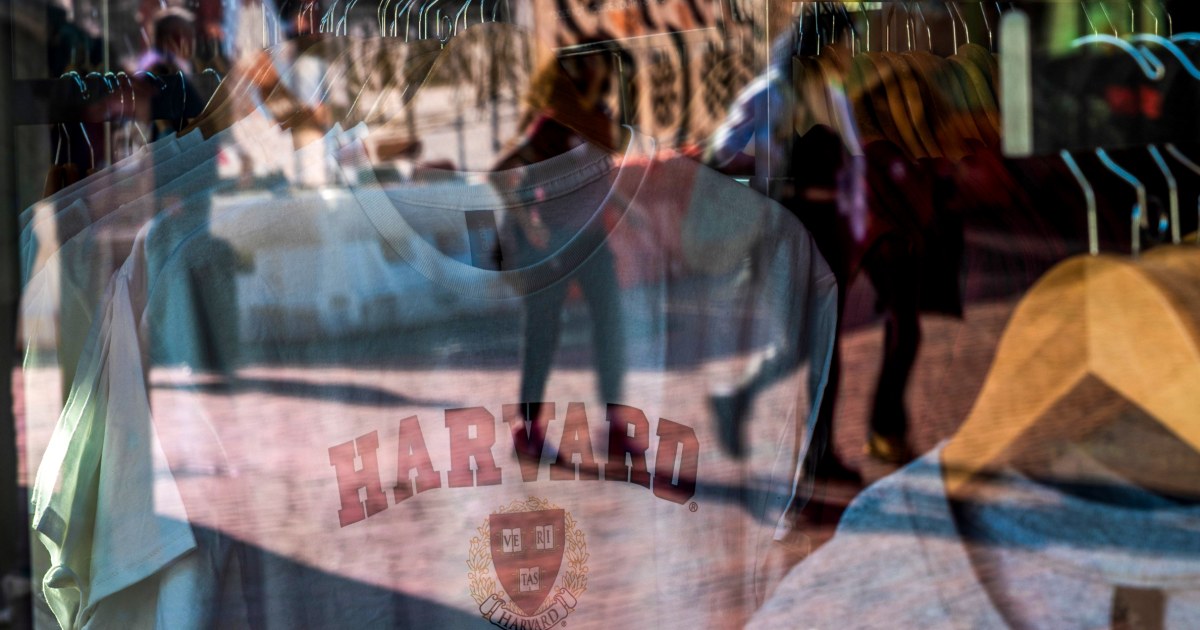
 News1 week ago
News1 week agoTrump administration continues to target international students. What to know and what could be next.
-
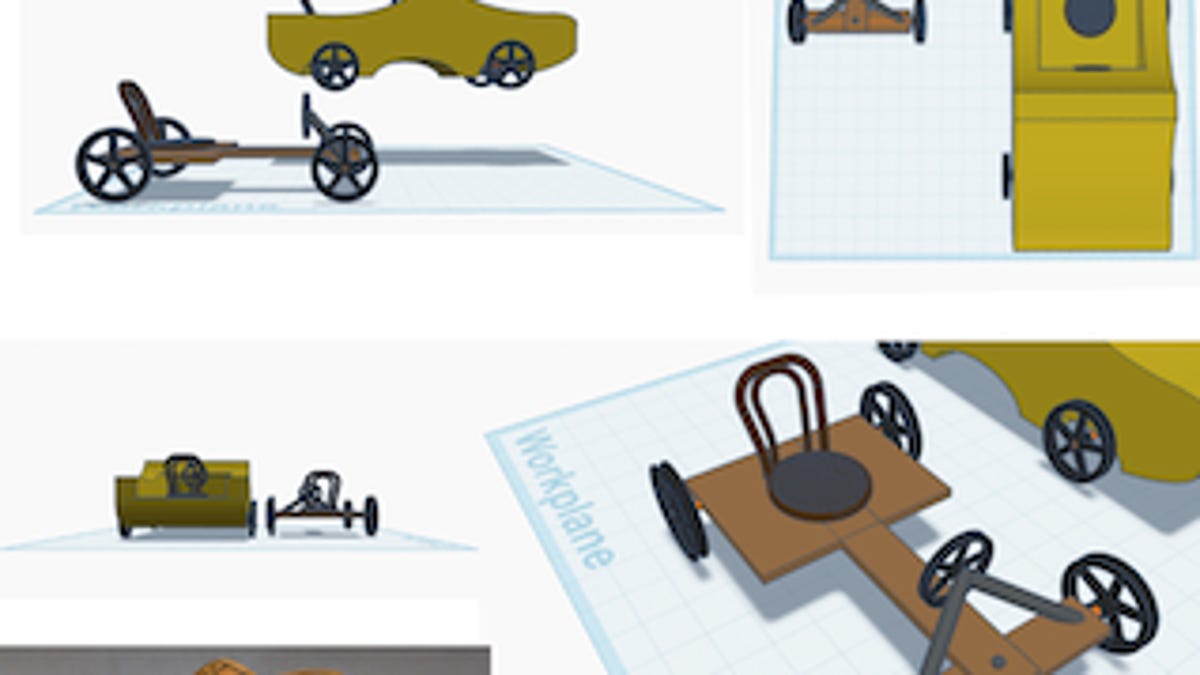
 Iowa1 week ago
Iowa1 week agoMeet the Clog Fathers: One of Iowa’s Red Bull Soapbox Derby teams
:focal(0x0:3000x2000)/static.texastribune.org/media/files/d3fa61a31060a00ce4f21c81921951cf/0609%20Austin%20Ice%20Protest%20RB%20TT%2003.jpg)
